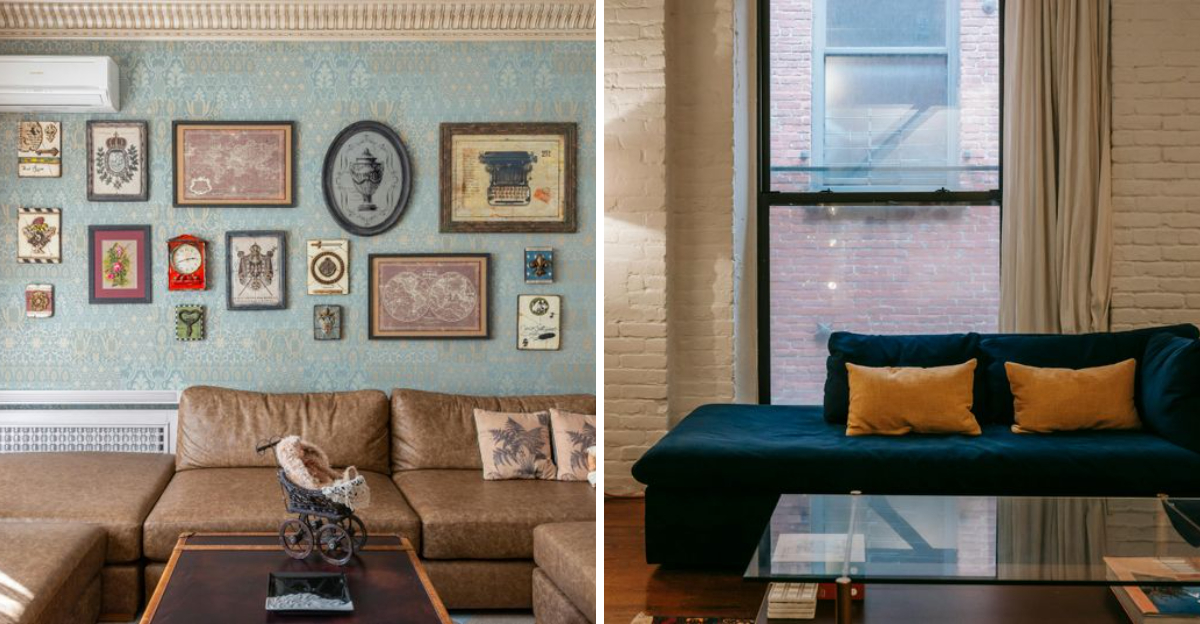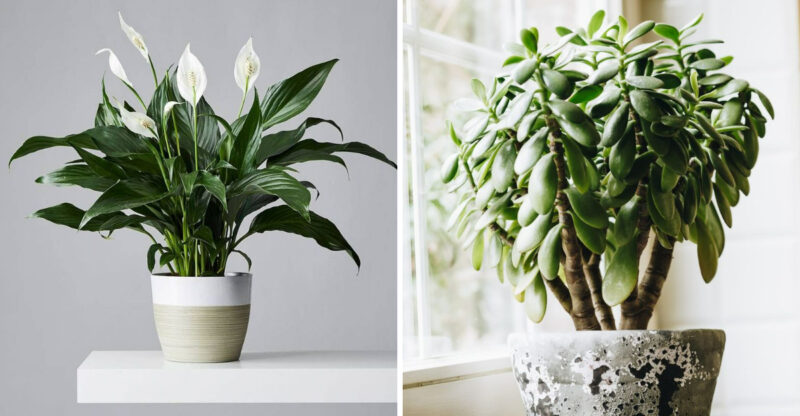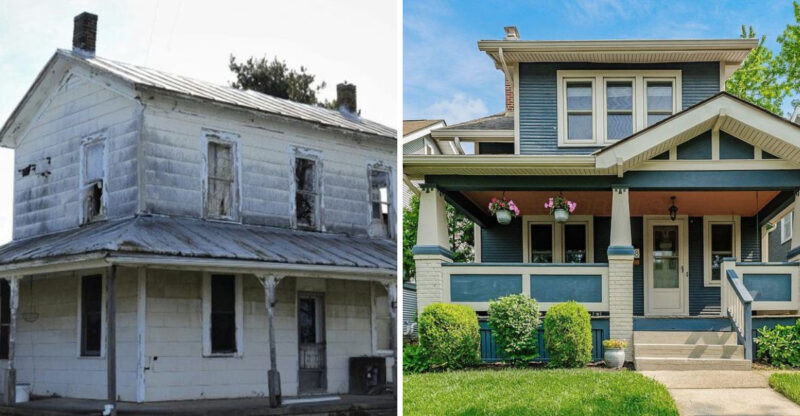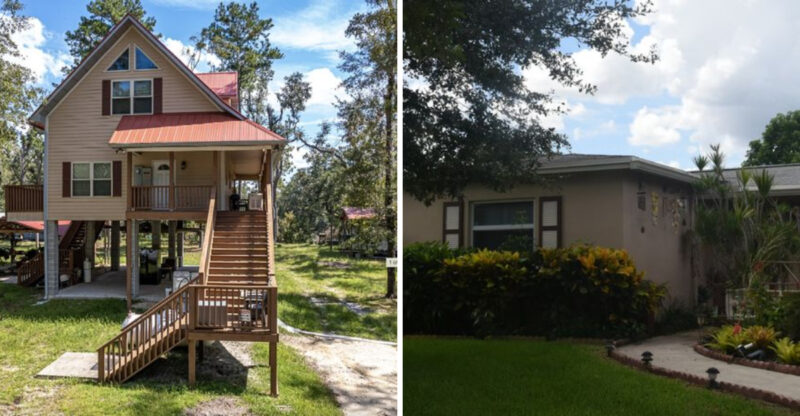11 Mistakes That Can Make A Living Room Feel Smaller Than It Is

Ever walk into your living room and wonder why it feels more cramped than cozy? Sometimes, it’s not the square footage, it’s the decor choices that are making the space feel tighter than it actually is.
From furniture placement to lighting and color schemes, small mistakes can have a big impact. You should check out these common missteps that could be shrinking your living room. And, together, we’ll find a way to fix them with simple changes.
Recommendations may vary depending on room layout, personal style, and available space.
1. Oversized Furniture Squeezing Out Space
That massive sectional sofa calling your name at the furniture store? It might be your living room’s worst enemy. Oversized furniture eats up floor space and creates awkward traffic flow around the room.
I’ve seen countless living rooms where a single giant couch dominates the entire space. When selecting furniture, always measure your room first and leave at least 30 inches for walkways.
Consider scale and proportion. Pieces should complement your room’s dimensions, not overwhelm them.
2. Wall-Hugging Furniture Arrangement
How many times have you pushed every piece of furniture against the walls thinking it creates more space? This common arrangement actually highlights the center emptiness while making the room feel like a waiting area.
Creating conversation areas with furniture floating away from walls adds depth and dimension. Pull that sofa 6-12 inches from the wall and angle chairs to create intimate groupings.
This technique creates layers in your space, making even modest rooms feel more thoughtfully designed and spacious.
3. Single Overhead Lighting Flattening The Room
Relying solely on that builder-grade ceiling fixture? The harsh shadows it casts can make your living room feel flat and uninviting.
Layered lighting transforms spatial perception by creating depth. Mix floor lamps, table lamps, and wall sconces at different heights to illuminate corners and highlight architectural features.
Varied lighting sources at different levels draw the eye around the room, creating visual movement that expands the perceived space.
4. Dark Wall Colors Without Balance
Though dark walls can be dramatic, without proper balance, they’ll make your room feel like a cave. Dark colors absorb light rather than reflect it, visually pushing walls inward.
If you love moody hues, consider using them on just one accent wall. Balance darker shades with lighter ceilings, trim, and furnishings. This creates depth while maintaining brightness.
Another trick? Add strategic lighting that specifically illuminates those darker surfaces to prevent them from visually receding too much.
5. Accessory Overload On Every Surface
When every horizontal surface hosts a collection of knick-knacks, your room starts feeling like a cluttered antique shop. Visual noise creates mental noise, making spaces feel constrained.
Edit ruthlessly! Display only items that truly bring joy or serve a purpose. Group accessories in odd-numbered clusters (three or five items) rather than spreading them everywhere.
Maintain some empty space on shelves and tables to give the eye places to rest. Remember, negative space is as important as the objects themselves.
6. Heavy Window Treatments Blocking Light
Those thick, dark drapes might keep light out wonderfully for movie nights, but they’re suffocating your living room. Heavy window treatments absorb light and visually weigh down the space.
Opt for lightweight, flowing fabrics that filter light rather than block it completely. Hang curtain rods wider than the window frame and closer to the ceiling to create the illusion of larger windows.
During daylight hours, keep drapes fully open to maximize natural light, the most powerful space-expanding element available.
7. Missing Mirrors And Reflective Surfaces
Where are the mirrors in your living room? If the answer is “nowhere,” you’re missing out on one of the oldest designer tricks for expanding space.
Mirrors essentially double your visual square footage by reflecting light and views. Position a large mirror opposite your biggest window to bounce natural light throughout.
Incorporate other reflective surfaces, too. Glass tables, metallic accents, and glossy picture frames all contribute to a more expansive feel by creating depth and bouncing light around the room.
8. Neglecting Vertical Space Potential
Are your walls bare above eye level? When you ignore vertical space, you’re essentially using only half your room’s potential.
Draw the eye upward with tall bookshelves, vertical artwork arrangements, or ceiling-height curtains. Wall-mounted shelving creates storage without consuming floor space.
Painting the ceiling a slightly lighter shade than the walls creates an illusion of height. These vertical design elements encourage visual movement throughout the entire volume of the room, not just the lower half.
9. Undersized Rugs Creating Visual Choppiness
That postage-stamp-sized rug floating in the middle of your room? It’s visually segmenting your space into even smaller chunks.
A properly sized area rug should accommodate all furniture legs or at least the front legs of major pieces. This creates a unified conversation area rather than disconnected furniture islands.
For living rooms, 8×10 or 9×12 rugs typically work best. The larger floor covering creates a sense of expansiveness and helps define the space without chopping it into smaller visual sections.
10. Too Much Furniture Crowding The Flow
If navigating your living room feels like an obstacle course, you’ve fallen into the too-much-furniture trap. Excess pieces not only consume physical space but also create visual weight.
Be ruthless about editing. Every piece should serve a purpose or bring significant joy. Consider multifunctional furniture like ottomans with storage or nesting tables that can be tucked away.
Leave breathing room between pieces and maintain clear pathways of at least 30 inches. Remember that negative space isn’t wasted space, it’s essential for creating a sense of openness.
11. Furniture Blocking Natural Light Sources
Is that bookcase partially blocking your window? Natural light is liquid gold for small spaces, and obstructing it is like pouring money down the drain.
Rearrange furniture to keep windows completely clear. Even tall plants or decorative items on windowsills can block precious daylight.
Consider using lower-profile furniture near windows, and if possible, remove window screens during daytime hours because they block up to 30% of natural light. Maximizing daylight instantly makes rooms feel more open and airy.






